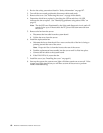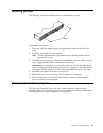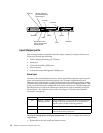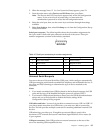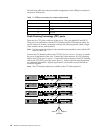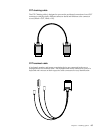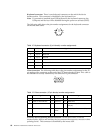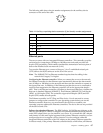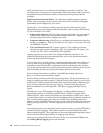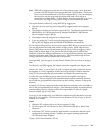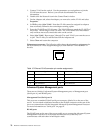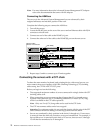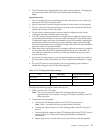68 Hardware Maintenance Manual: xSeries 330
traffic associated with it is switched to the redundant (secondary) controller. This
switching occurs without any user intervention. When the primary link is restored to
an operational state, the Ethernet traffic switches back to the primary Ethernet
controller.
High Performance Ethernet Modes: Your Ethernet controller supports optional
modes, such as teaming, priority packets, and virtual LANs, which provide higher
performance and throughput for your server.
Teaming Mode: Your Ethernet controller provides options, called teaming options.
These options increase throughput and fault tolerance when running with Windows
NT 4.0 or NetWare 4.1x or later.
• Adapter fault tolerance (AFT) provides automatic redundancy for your adapter.
If the primary adapter fails, the secondary adapter takes over. Adapter fault
tolerance supports from 2 to 4 adapters per team.
• Adaptive load balancing (ALB) allows you to balance the transmission data flow
among 2 to 4 adapters. ALB also includes the AFT option. You can use ALB with
any 100BASE-TX switch.
• Cisco Fast EtherChannel (FEC) creates a team of 2 to 4 adapters to increase
transmission and reception thoughput. FEC also includes the AFT option. You
can only use FEC with a switch that has FEC capability.
Teaming requires you to use both of the integrated Ethernet controllers. For
additional information about the teaming modes, refer to the documentation that
comes with these additional adapters.
Priority Packet Mode: Priority Packet is a traffic-prioritization utility that enables you
to set up filters to process high-priority traffic before normal traffic. You can send
information from critical nodes or applications with an indicated priority. Because
you set this priority at the host or entry point of the network, the network devices can
base forwarding decisions on priority information defined in the packet.
Priority Packet information is available on the IBM Networking Web site at:
http://www.ibm.com/networking/support
Priority Packet prioritizes traffic based on priority filters. These are parameters you
assign to outgoing (transmit) packets. Using the Priority Filter Wizard, you can set up
predefined or custom priority filters based on a node (MAC) address, Ethernet type,
or by various properties of the protocol and port. Priority Packet provides two
different methods for prioritizing traffic: IEEE 802.1p tagging and High Priority
Queue.
IEEE 802.1p is a new IEEE standard for tagging, or adding additional bytes of
information to packets with different priority levels. Packets are tagged with 4
additional bytes, which increase the packet size and indicate a priority level. When
you send these packets out on the network, the higher priority packets are transferred
first. Priority packet tagging (also known as Traffic Class Expediting) allows the
adapter to work with other elements of the network (such as switches and routers) to
deliver priority packets first. You can assign specific priority levels from 0 (low) to 7
(high).
You can assign values to packets based on their priority when you use the IEEE 802.1p
standard for packet tagging. This method requires a network infrastructure that
supports packet tagging. The routing devices receiving and transferring these packets
on your network must support 802.1p for tagging to be effective.
After you set up the priority filter in Priority Packet, you must launch IBMSet and
select 802.1p/802.1Q Tagging on the Advanced tab.



